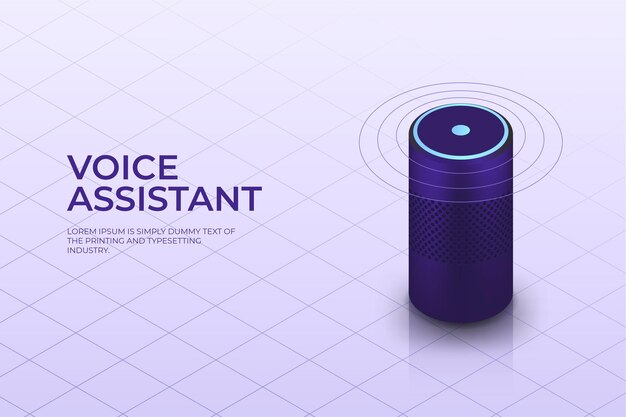Introduction: The Rise of Voice Assistants Voice assistants have rapidly transformed the way we interact with technology. These intelligent virtual companions, such as Amazon’s Alexa, Apple’s Siri, Google Assistant, and Microsoft’s Cortana, have become integral parts of our daily lives. Behind their seemingly effortless ability to understand and respond to our spoken commands lies a
Introduction: The Rise of Voice Assistants
Voice assistants have rapidly transformed the way we interact with technology. These intelligent virtual companions, such as Amazon’s Alexa, Apple’s Siri, Google Assistant, and Microsoft’s Cortana, have become integral parts of our daily lives. Behind their seemingly effortless ability to understand and respond to our spoken commands lies a complex web of technology. In this article, we uncover the mechanics of voice assistants, exploring the technology that powers them beyond mere words.
How Voice Assistants Work: An Overview
At the core of every voice assistant is a combination of advanced technologies that work harmoniously to provide a seamless user experience. The primary components include speech recognition, natural language processing (NLP), and machine learning. Let’s take a closer look at each of these elements.
Speech Recognition: Understanding Your Voice
Speech recognition is the fundamental technology that allows voice assistants to understand spoken language. When you interact with a voice assistant, the system listens to your voice and converts it into text, which it can then analyze and process. This technology has evolved significantly over the years, becoming more accurate and capable of understanding diverse accents and dialects.

Image by: https://truegazette.com/
Natural Language Processing: Interpreting Human Language
Understanding the words spoken is only the beginning. Natural language processing (NLP) enables voice assistants to comprehend the meaning behind those words. NLP allows them to grasp context, intent, and even emotions, making the interactions feel more human-like. As a result, voice assistants can handle complex queries, follow-up questions, and engage in natural conversations.
Machine Learning: Personalizing the Experience
Voice assistants continuously learn from user interactions through machine learning algorithms. The more you use a voice assistant, the better it understands your preferences, speech patterns, and behavior. This personalized learning allows voice assistants to tailor responses, recommendations, and suggestions to suit individual users.
Voice Assistant Hardware: From Microphones to Speakers
The hardware plays a crucial role in the performance of voice assistants. High-quality microphones capture your voice with precision, even in noisy environments. On the other end, speakers deliver clear and natural-sounding responses. Voice assistants may be integrated into smart speakers, smartphones, smart TVs, or other devices, each with its unique hardware specifications.
Beyond Audio: Visual and Contextual Integration
Modern voice assistants go beyond audio-only interactions. Some devices come equipped with screens, enabling visual responses to queries. Visual integration enhances the user experience, displaying relevant information and supporting tasks like browsing, weather forecasts, and video playback. Contextual integration ensures that voice assistants remember previous interactions, providing continuity and more accurate responses.
Security and Privacy Considerations
As voice assistants become more integrated into our lives, security and privacy become paramount. Manufacturers implement robust security measures to protect user data and ensure safe interactions. Users must also be vigilant about their privacy settings and be aware of the information shared with voice assistants.
The Future of Voice Assistants: Advancements and Applications
The future of voice assistants holds exciting possibilities. As technology advances, voice assistants will become even more intelligent, intuitive, and seamlessly integrated into various aspects of our lives. They will play critical roles in smart homes, healthcare, education, and other industries, offering convenience and efficiency.
Voice assistants may also expand their language capabilities, supporting a broader range of languages and dialects. Additionally, advancements in emotion recognition may enable voice assistants to understand and respond to users’ emotional states, further enhancing the human-like interactions.
In conclusion,
voice assistants are a testament to the incredible progress in artificial intelligence, speech recognition, and natural language processing. Understanding the mechanics that power these virtual companions reveals the complexity of their operations and the potential they hold to revolutionize our daily interactions with technology. As the technology continues to evolve, voice assistants will become even more integral to our lives, reshaping the way we interact with the digital world.

















Leave a Comment
Your email address will not be published. Required fields are marked with *